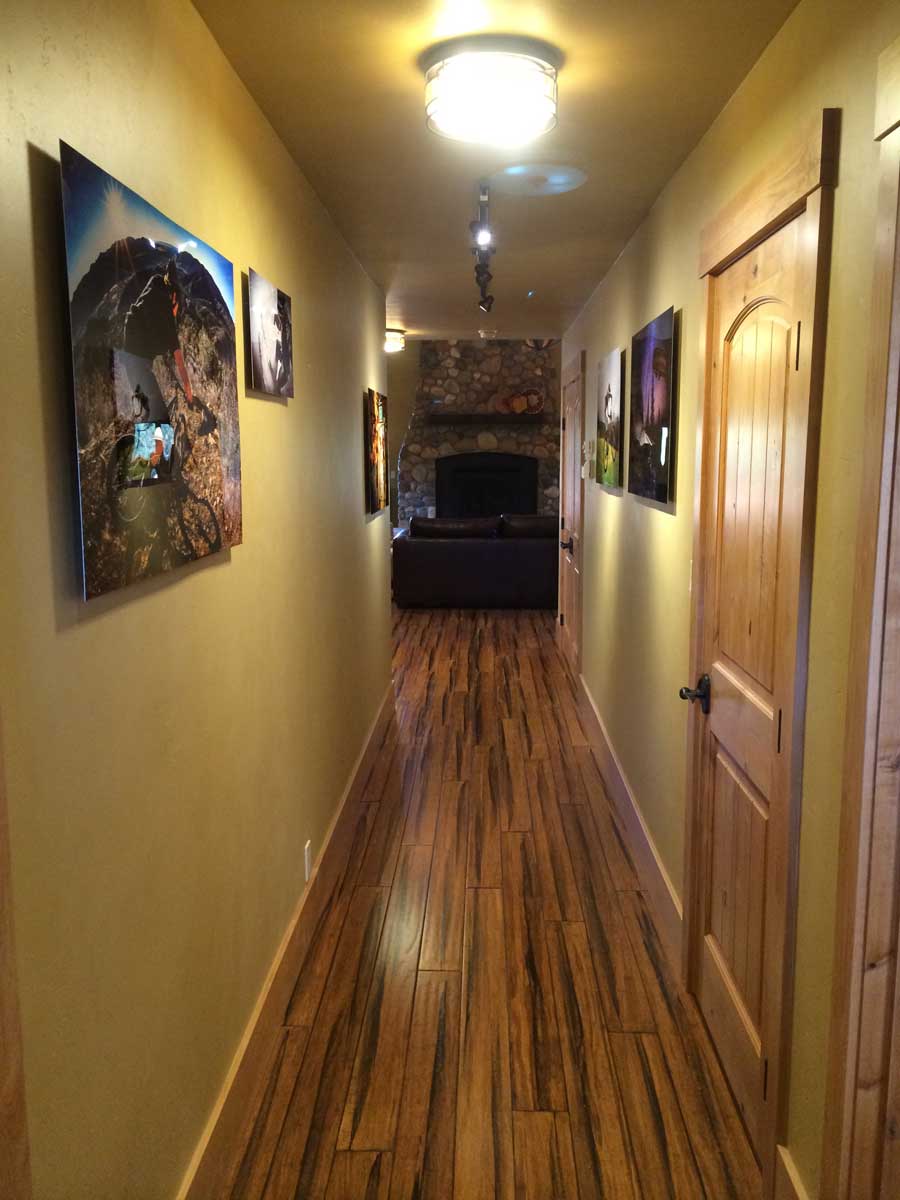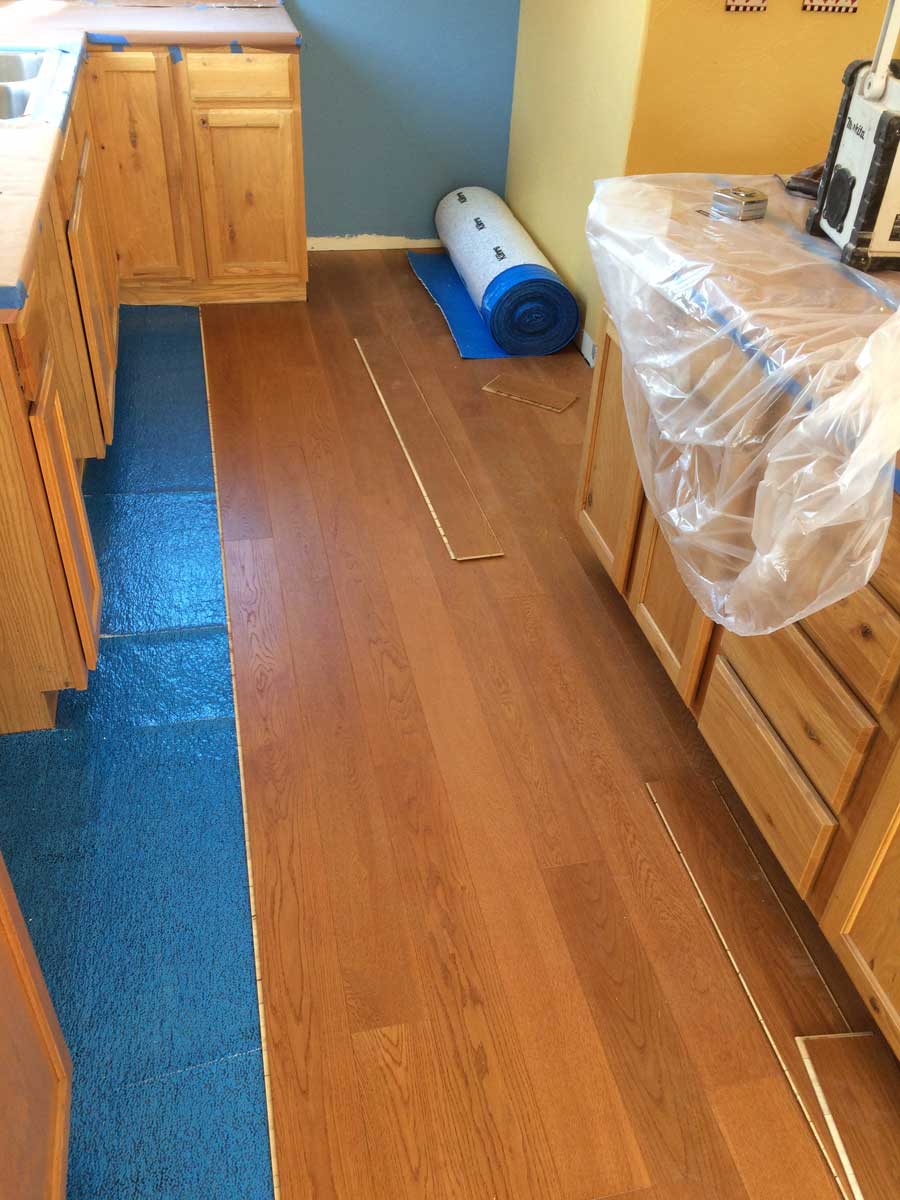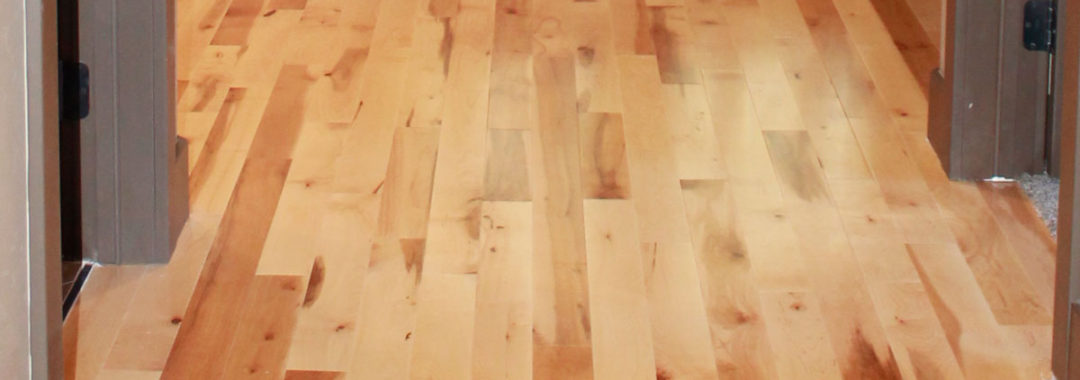When discussing interior finishes with our customers, the type of wood flooring to use is an important conversation to have. The resulting decision affects the project budget, aesthetics, maintenance requirements, longevity, and the tactile feel of your home. In fact, the floor is the one part of your home you are almost always touching. Ultimately, whether you choose either real wood or an engineered flooring system, the species of wood chosen and the manufacturing process of the wood product and finish will determine its suitability for your particular project.

^^ Laminated-solid Bamboo wood flooring with rustic glaze finish. ^^
Solid Wood Flooring -
It’s important to note that within the family of solid wood flooring, there are finish-in-place and pre-finished options. Wood floors that are finished in place are the traditional method of hardwood installation. After the planks are glued and/or nailed down, the floor is filled, sanded, and finished in place. The result is a smoother, more homogenous product than a pre-finished floor with the inherently visible joints between each plank.
Pre-finished solid wood flooring can be a more economical approach to installing a real wood floor without the hassle of on-site sanding and finishing. This benefit can lead to significant savings in project scheduling and in some cases even result in a better overall product. The type of finish installed and the process for finishing in a factory environment often times lead to a more consistent and durable product compared to what can be achieved on site.
What about damage? Both types of solid wood floors are generally easily repaired. Prefinished floors are generally easier to repair in case of damage by simply changing out individual boards with new ones, while finish-in-place floors sometimes need to be completely re-finished to make repairs.

^^ Engineered floating floor with underlayment during installation. ^^
Engineered Wood Flooring -
Much like solid wood flooring, the term engineered flooring does little to describe the full spectrum of species, products, and finishes available on the market. So, what’s engineered about an engineered wood floor? Engineered for our purposes of discussion simply means that the product is not constructed from 100% homogenous wood. There is generally a layer of OSB (Oriented Strand Board) or MDF (Medium Density Fiberboard) to make up the products core, which is then covered with a layer of veneer. This core material is less expensive than the finished veneer on top and is also more dimensionally stable under normal conditions. Depending on the economy range of the product, this veneer layer can vary from being an ultra-thin plastic veneer with a screened wood grain pattern, to a thin real wood veneer, to a much thicker solid wood wear layer capable of being refinished.
Most of the engineered systems are what you would describe as a floating floor. This means that the floor covering is not mechanically attached or glued to the subfloor in any way. This allows for the expansion and contraction to occur that is required of these systems. Some people like the “softness” of a floating floor system, while some prefer the more solid, quality feeling of a floor that is glued and nailed down. Floating systems also require transitional trim pieces at doorways, flooring transitions, stair nosings, and around cabinets to allow room for the floor system to move without breaking.
Repairs on a floating floor can be difficult if the damage is in the middle of the area, and not near a wall or edge of the flooring. Individual boards can be replaced, but other boards would have to be removed and reinstalled going in one direction from the repair site.
The Importance of Species -
Whether you choose a solid wood or engineered floor, species will play an important role in the long term look and feel you experience. A character-grade or reclaimed floor that is constructed from a hard wood like Oak or Ash will provide very long service life with minimal visual impacts to the surface over time. This is in contrast to say, a much softer, wide-plank Pine floor with a high-gloss finish. If you have children or pets, the species and type of finish are an important consideration.
The final selection of your floorcovering materials is an important part of your home project. The decision will affect the budget, schedule, and the look and feel of your home for years to come. I would encourage you to talk with your builder or visit local suppliers and start talking about what you’re looking for in a wood floor to learn about your options.

